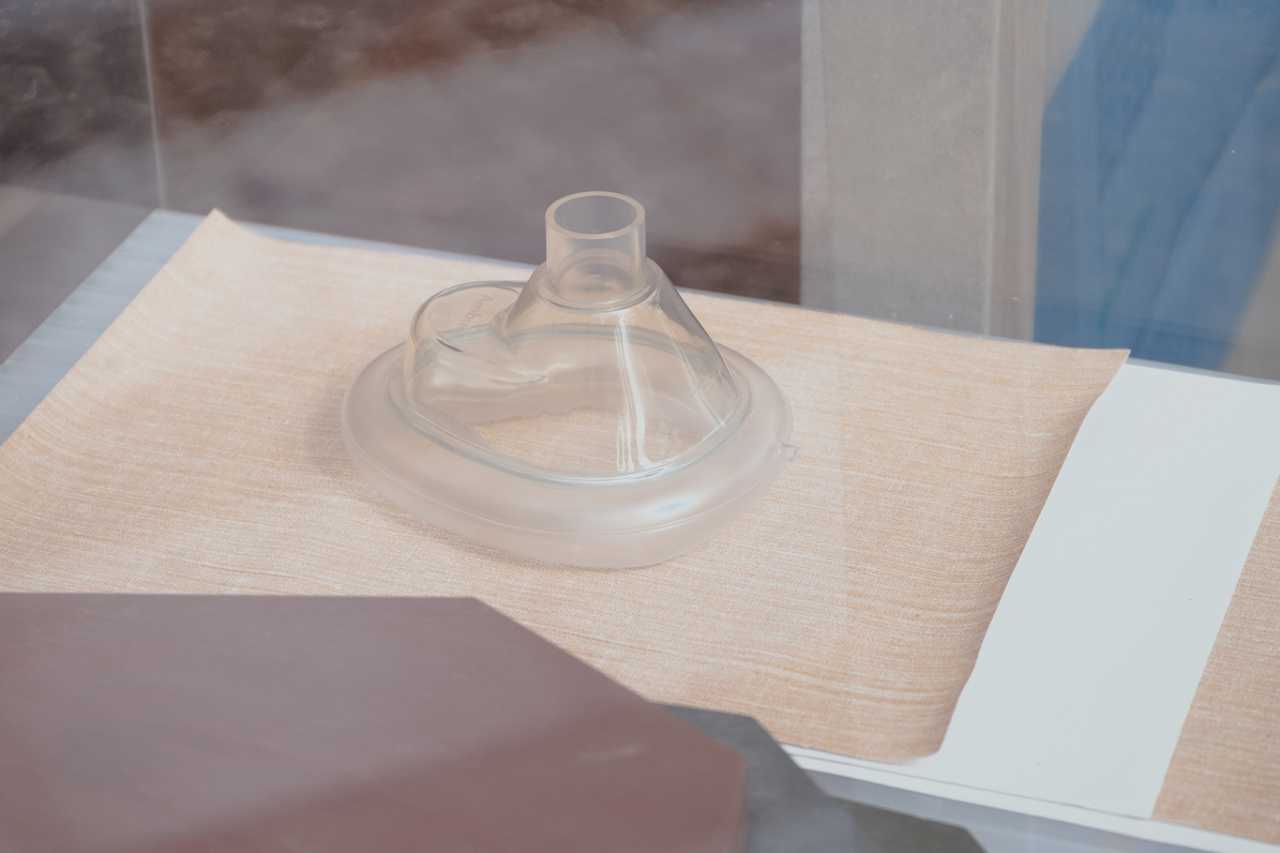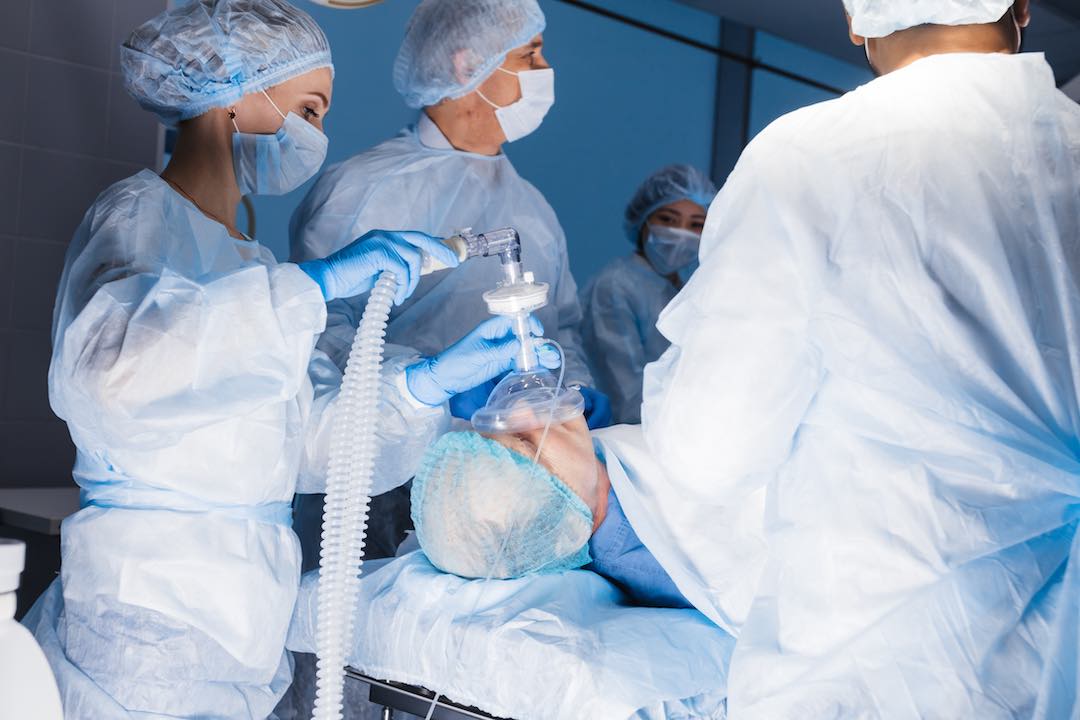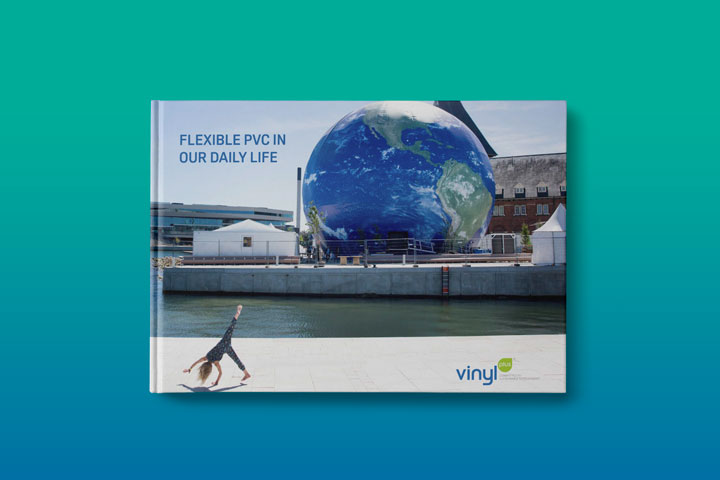Healthcare
Europe’s ageing population means quality healthcare will increase in the coming years. Safe, reliable and affordable medical devices and welcoming hospital facilities with top-notch hygiene are key to well-functioning health systems. PVC, or vinyl, is both the most used material for disposable – and recyclable – medical devices, and a chosen material for safe and hygienic hospital floors, wall covering and ceilings. Discover how PVC, or vinyl, contributes to make Europe’s healthcare resilient.
Safe, reliable and recyclable medical devices
Single-use plastics-based medical devices are essential for safe and efficient patient treatment and care in hospitals and health facilities. Many different polymers are used for medical equipment, with PVC in the leading role. Nearly 30% of all plastics-based devices are made of PVC and this share is expected to remain the same in the next decade.
PVC’s dominance is not a coincidence. Since the 1950s when the blood bag was introduced, PVC or vinyl has become the material of choice for tubing, oxygen masks, transfusion sets, gloves, blister packaging for medicines and many other products that are essential to 21st-century healthcare. There are many reasons why medical device manufacturers choose PVC over other materials. It is safe, extremely versatile and cost-efficient, which is crucial in a future where Europe’s ageing population will increase the demand for healthcare.
What is Ramboll saying?

When it comes to PVC medical devices, single-use does not mean unrecyclable. PVC is easily recyclable, and since 2014 the European PVC industry’s commitment to sustainable development VinylPlus has financed pilot projects that demonstrate that it is possible to safely collect and recycle used medical devices. In 2021, the partnership VinylPlus® Med was launched to help Belgian hospitals sort their PVC waste stream. Additional programmes are underway in other European countries, which will help accelerate the green transition of healthcare.
The project demonstrates it is possible to turn disposable medical devices into valuable recyclates for durable wall covering for hospitals.
Vinyl coverings make hospitals safer and more welcoming for all
Every day across Europe, new hospitals and healthcare centres are being built. These significant investments often aim to create architectural projects that participate in ensuring efficient, flexible and qualitative patient treatment, in addition to optimising working conditions for staff.
The architectural challenge of these new hospitals is for aesthetics and functionality to form a perfect match. The countless combination options offered by vinyl-based materials enable the architects’ free rein in their creativity, offering them almost infinite design options to meet aesthetics, functionality, safety, affordability and sustainability needs.
The idea of a “healing architecture” holds sway over many new hospital projects. This concept covers, among other things: light, colour, art, access, orientation options, noise reduction and green recreational surroundings. Studies show that these elements positively influence the success of the patient treatment and improve the working environment of hospital staff.
What is Ramboll saying?

Safety and hygiene are other crucial elements in health care environments. According to the European Centre for Disease Prevention and Control, infections occurring in clinical environments represent a significant threat to public health. In Europe, over 8.9 million patients contract infections in hospitals and long-term care facilities . These infections can be significantly reduced by, amongst other things, using appropriate materials across the hospital premises for flooring, walls and ceiling coverings. The smooth and dirt-resistant properties of vinyl considerably reduce the risk of retention and multiplication of bacteria.
Thanks to its great wear resistance, ease of installation, cleaning and maintenance, vinyl optimises the cost of running and maintaining heavy traffic environments. A life-cycle cost analysis completed by the Västra Nylands Hospital in Finland showed that the hospital was saving €65,000 a year on cleaning. The hospital chose a high-quality vinyl which requires no polishing. Calculated on a 24-year life cycle, total savings run to €1.6 million on cleaning alone. There is also an obvious environmental benefit as, over a period of 24 years, the hospital will save 58,320 litres of water, 17,136 litres of chemicals and 16,944 kWh of electricity.
These benefits have made vinyl flooring, ceilings and wall covering integral to operation theatres, patient rooms, clean rooms, wet rooms and laboratories everywhere.
Temporary constructions for COVID-19
Temporary constructions for COVID-19 tests and vaccination have become common sights throughout Europe. Many of the constructions are made of PVC tarpaulins. The benefits are clear: PVC tarpaulins are highly durable, fire-retardant, resistant to wind, weather, strain and kinks, and can be reused again and again.
Innovative designers have also found new ways to use PVC in the fight against the virus. An example is the Italian project CURA (“Connected Units for Respiratory Ailments” and also “Cure” in Latin), that uses shipping containers to provide Intensive Care Units (ICU) for patients affected by COVID-19. Each pod contains all the medical equipment required to care for up to two ICU patients.
The unit is connected to the rest of the hospital by an inflatable PVC structure, which serves as both storage and changing rooms for medical staff. The PVC inflatable unit can also be used to connect multiple pods to create multiple modular configurations, either in proximity to a hospital or as a self-standing field hospital.
What is Ramboll saying?
VinylPlus Med® accelerates sustainable healthcare in Europe
COVID-19 has highlighted the crucial role played by single-use plastic medical devices in the prevention and control of infection in hospitals. The surge in the need of such disposable items has shed light on the challenges of properly managing and discarding them after use. Properly sorting and recycling the non-infectious plastic waste can both significantly reduce the environmental impact of hospitals and their operational cost.
Market studies show PVC is the most used polymer for single use medical devices and it will retain its position in the years to come. The high volume and PVC’s unique recyclability indicate that hospitals should start with PVC in recycling schemes for plastics-based medical devices.
The European PVC industry, through VinylPlus, has invested in recycling of PVC medical devices since 2014 when the RecoMed take back scheme was established in the UK.

In 2022, VinylPlus launched a collaborative project called VinylPlus® Med. Aimed at accelerating sustainability in healthcare across Europe through the recycling of discarded single-use PVC medical devices, the project brings together hospitals, waste management companies, recyclers and the PVC industry. Belgium is chosen as pilot country.
The scheme focuses on the production of PVC recyclates free of substances of concerns that can be included into a wide range of value products marketed across Europe. Durable wall covering for hospitals incorporating PVC collected at Belgian hospital has already been manufactured by the Dutch company Vescom.
Renewi (a waste management company) and Raff Plastics (a recycler) are current partners. The aim is to collect 1,000 tonnes of PVC/year. The build-up of additional programmes is underway in other European countries.
Robust PVC blood bags enable drone transportation
PVC is the material of choice for blood bags and has been so for over 60 years. In 1950, two American doctors invented a plastic bag for blood. Prior to that, fragile glass containers were used. The new robust plastic bag enabled a revolution in blood collection and preparation.
The blood bag first showed its worth during the Korean War. As it could withstand being dropped from the air without shattering, it helped save thousands of soldiers’ lives. Robustness continues to be a key advantage. In various parts of Africa, drones deliver blood much faster than land transport: instead of a 5-hour round-trip drive to a hospital, the average time for a drone delivery is 30 minutes.
New booklet: Flexible PVC in Our Daily Life
In 2020, VinylPlus and PVC Information Council Denmark commissioned Ramboll Denmark to conduct a study on flexible PVC. The aim was to find out why plastic converters choose flexible PVC for specific products such as flooring, roofing membranes, tarpaulins, tents and medical devices.
Ramboll concludes that flexible PVC is irreplaceable in many important applications due to the materials’ unique functional properties such as durability, weather-resistance and versatility.
Throughout this booklet you will find several other reasons showing the unique properties flexible PVC can provide to products. They are durable, affordable and often beautiful applications. Many of them can concretely contribute to Europe’s green transition.

